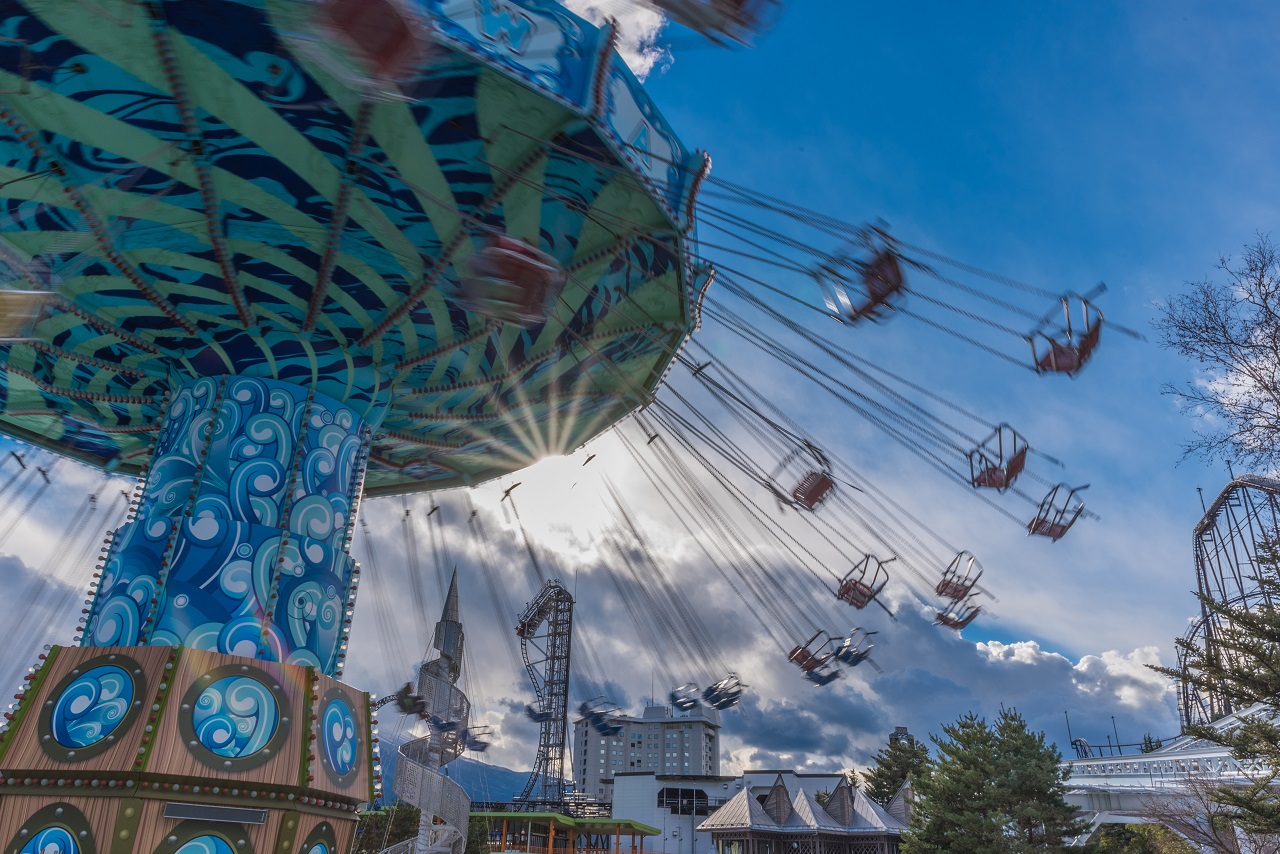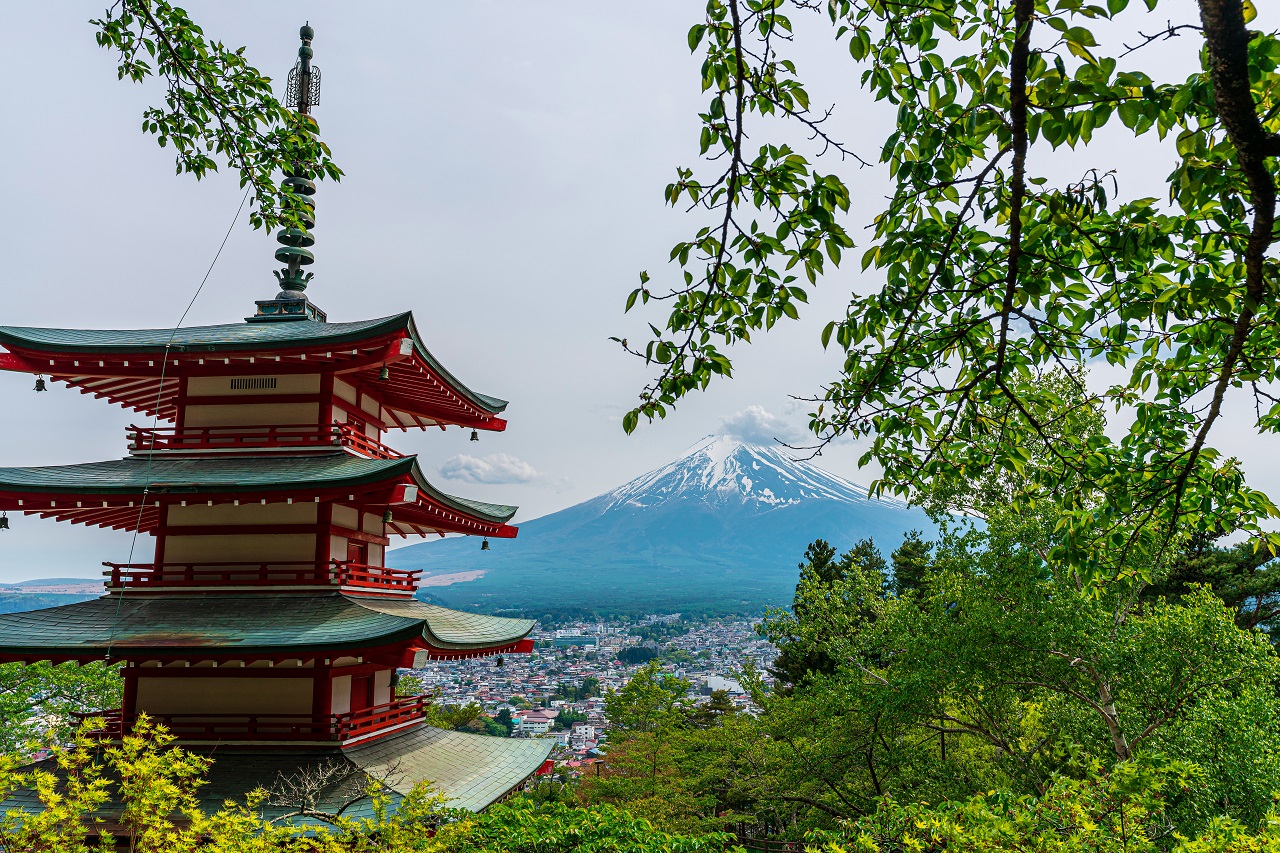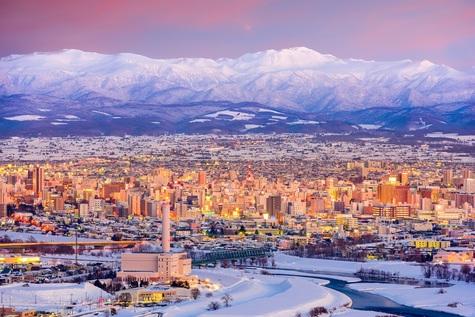
Mt Fuji Destination guide
Mt. Fuji travel guide - What to do, see and visit around Fuji-san
Table of contens:
Standing at 3,776m high, Mt Fuji (also called Mt Fujisan) is the tallest mountain in Japan and has an undeniable air of mystery about it. Notoriously shy, Mt Fuji is only able to be seen clearly on approximately 80 days of the year. Those who are fortunate enough to see it in all its glory on a clear day, are guaranteed a jaw-dropping experience. To see Mt Fuji in the flesh is an awe-inspiring moment, so it's no wonder that thousands flock every year to view, climb and summit the top.

The present-day mountain is a composite of three successive volcanoes, all piled on top of each other. The original “Ko Fuji” (old Fuji) was formed some 65 million years ago with “Shin Fuji” (new Fuji) being formed within the past 2.6 million years. Since 781, Mt Fuji has exploded more than 15 times however the last eruption being in 1707 classifies the volcano as dormant. The graceful conical volcano is Japan’s sacred symbol and climbing the mountain has long been a religious practice. Surrounded by temples and shrines, a pilgrimage to Mt Fuji is a very special experience for Japanese people.
Which time of the year you decide to visit Mt Fuji will greatly influence what you are able to see and do in the area. Although the mountain is technically open all year round, the mountain huts are only open during summer months, and public transport becomes much less frequent or non-existent during the rest of the year. The best time of year to view Mt Fuji is in the winter, whilst the best time to climb is during the summer.
Experience Mt Fuji

Of all the bucket list items on a trip to Japan, experiencing Mt Fuji is usually at the top of the list. Whether you would like to challenge yourself to climb, find the best viewpoint or relax in an onsen in a nearby town, there are many different ways to structure a Mt Fuji visit.

Climbing the iconic volcano is one of the biggest draw cards for Mt Fuji tourism. The climbing season runs from early July to early September. In other periods and during the snow season, climbing is strictly prohibited. The mountain is divided into ten stations, with station one at the foot of the mountain and station ten being on the summit. You will find paved roads will go only as far as the fifth station, which is around halfway up the mountain. There are 4 trails which lead to the summit and each trail has its own starting point. Keep in mind that these are base stations for climbing, not train stations, which travellers can often be confused by.
Yoshida trail: This is the most common and popular of all the trails. Here you will find the Fuji-Subaru Line 5th Station and this leads to the summit from the north side of Mt. Fuji in Yamanashi Prefecture.Subashiri Trail: The Subashiri Trail starts at the Subashiri Trail 5th Station, around 2000 meters altitude. The ascent will take between 5-8 hours and the descent 3-5 hours. This option is the second easiest in terms of accessibility from Tokyo, although it is far less developed than the Fuji-Subaru line.
Gotemba Trail: Being the lowest 5th station, the ascent to the summit is naturally the longest and will take between 7-10 hours to complete.
Fujinomiya trail: At 2400 meters above sea level, the Fujinomiya 5th Station is the highest of the fifth stations, and the Fujinomiya Trail is the shortest route up Mount Fuji.
Climbing Mt Fuji is not for the faint hearted. It can be a tough trek, but with a bit of pre-planning and local knowledge it will be an extremely enjoyable and rewarding experience. Follow our Mt Fuji travel advice to ensure the best experience possible:
-Be prepared. Keep a close eye on weather conditions and try to leave a few days either side of your planned visit in case of unexpected poor conditions. Take plenty of food, water and warm clothes. As a minimum, bring a waterproof jacket, gloves and a hat. A good pair of hiking boots will ensure a safe climb on the rocky and steep terrain. Don’t forget sunscreen for your descent in the morning sun.
-Although each hiking trail is signposted, it’s advisable to invest in a good map of Mt Fuji which includes maps of the trails and walking times.
-Pack your camera in a waterproof bag with a fully-charged spare battery, you don’t want to miss that picture-perfect shot at the top!
Viewing Mt. Fuji

The best time of day to view Mt Fuji is usually early in the morning, around 8 am. Your chances of a successful viewing decrease as the day goes on. There are many different places where you can view the majestic volcano, and everyone has an opinion on which one is best. Here are a few of our favourite Mt Fuji views: Mt Fuji sightseeing requires a little planning and a bit of luck, which makes a great viewing all the more worthwhile.
Arakurayama Sengen Park is one of the most famous viewing spots of the majestic Mt Fuji. In Springtime, the view is decorated with a beautiful sprinkling of cherry blossoms, making it even more stunning.
Oishi Park is located beside Lake Kawaguchi and houses a picturesque frame of the volcano and its surrounds.
Lake Motosu houses a view which you may recognise from the 1,000 yen bill. It’s very popular and equally stunning on a clear morning.
Asagiri Kogen is the ideal viewing spot for the more adventurous traveller. What better way to soak in the views of Mt Fuji than by paragliding across the epic landscape?
Things to do in Mt Fuji
Planning a Mt Fuji itinerary is an incredibly exciting experience, one that many people wait their entire lives to be able to do. Many visitors will want different things out of their visit, and by planning what to do in Mt Fuji beforehand, you can ensure you make the most of your trip. Whether you’re after a calm, relaxing trip or an adventurous, adrenaline-filled time, there is something for everyone in the area.
Fujiten Snow Resort

Fujiten is a small snow resort set in an outstanding location, right at the base of the mountain. It is one of only three ski and snowboarding resorts in the Yamanashi Prefecture. It boasts four ski lifts and seven slopes to challenge skiers from beginner to advanced level.
Fuji-Q highlands

Known as one of Japan’s most popular amusement parks, Fuji-Q highland is located in the Fuji Five Region. With over 30 attractions and rides, including one of the world’s most extreme roller coasters, this is a great addition for travellers looking for an adrenaline rush!
Snow Town Yeti
Snow Town Yeti is another ski resort option which is famous for opening early in the season due to it having a snow machine which produces 650 tonnes of snow every day! Onsite you will find a snow park, a kids park, adventure activity options and a restaurant.
Shibazakura Festival

For a truly unique experience, add Shibazakura Festival to your bucket list. You can enjoy vividly pink shibazakura, or moss phlox, at the Fuji Shibazakura Festival that occurs annually, drawing in thousands of travellers every year who marvel at this short-lived natural wonder.
Narusawa Ice Cave and Fugaku Wind Cave

Fugaku Wind Cave is a lava tube at the northern foot of Mount Fuji, Japan. It is the largest of the several lava tubes that are found in the Aokigahara forest. Numerous lava caves were formed from lava flows emanating from Mt. Fuji, of which about half exist within the forest. This is easily one of the most popular attractions after viewing and climbing Mt Fuji.
Kitaguchi Hongu Fuji Sengen- jinja Shrine

You can’t miss the 18 meter-tall dark red torii gate which marks the entrance of the sacred Fujiyoshida Shinto Shrine. The shrine has a history of 1900 years and is the historical starting point used by pilgrims on their way to climb Mount Fuji from the north. Even if you’re not planning on hiking, the shrine complex with wooden structures & stone lanterns is well-worth a visit.
Where to stay near Fuji
If you’re planning on spending more than a day visiting Mt Fuji, there’s a wide range of fantastic accommodation in the local area to suit every budget and style. You will find a quaint collection of villages and towns, each with a different shade of Japanese hospitality on offer. Whether you want luxury, the great outdoors, or a combination of both, there’s a town with the perfect Ryokan waiting for you!
Budget:
Hostel Fujisan You
This hostel is brand-spanking new which means all of the facilities are sparkling clean. The location is perfect, right at the foot of Mt Fuji and to top it off they offer free breakfast which starts your day of exploration on the right foot.
Royal Hotel Kawaguchiko
Whilst this is called a hotel, it ticks every ryokan box (tatami, onsen, meals) and they also have dorm rooms available. You still get tatami mats, futons to sleep on and access to an outdoor onsen, as well as the central location, you’ll just be saving lots on cost in exchange for sharing dorms with other people.
Mid-Range:
Air BnB
Check out AirBnB for a range of gorgeous apartments, many with outstanding views of Mt Fuji. This option is great for those who are looking for a home away from here where they can unpack, relax and cook a meal.
Luxury:
Fuji Marriott Hotel Lake Yamanaka
If you are adopting the “you only live once” attitude, why not treat yourself to a luxurious stay in a 5-star hotel? This Marriott Hotel oozes class and luxury, and staying here will be an experience you will never forget.
Shuhokaku Kogetsu
Right on the shore of Lake Kawaguchi, Shuhokaku Kogetsu features outdoor hot-spring baths with lake views, traditional Kaiseki dinners in the privacy of guests’ rooms and a terrace with Mount Fuji as a backdrop
Side visits from Mt Fuji:
Fuji Five Lakes
On the northern slopes of Mt Fuji lie the Fuji Five lakes, all formed by the damming effects of lava flows. The famous area comprises Yamanaka, Kawaguchi, Saiko, Shōji and Motosu lakes. Even if climbing Mt Fuji isn’t for you, a trip to Fuji Five Lakes to admire the incredible views, take a leisurely stroll or to soak in an onsen is absolutely worth the trip. Culture buffs can also delve into the fascinating history of Mt Fuji worship at several sites.
Hakone
Part of the Fuji-Hakone-Izu National Park, Hakone is less than one hundred kilometers from Tokyo and can be enjoyed year-round with its stunning seasonal landscape. Offering serene onsen, world-class art museums, traditional inns and spectacular mountain scenery crowned by Mt Fuji, basing yourself from Hakone gives you the best of both worlds. A scenic, relaxing town with adventure right on your doorstep.
Fujinomiya
Prize-winning yakisoba (a stir fry noodle dish), Japan's top Sengen shrine and the new Mt. Fuji World Heritage Center makes this a fantastic side trip or place to base yourself from. Fujinomiya lies at the western foot of Mount Fuji, about 5 miles (8 km) northwest of Fuji city, making it the closest city to Mt Fuji.
Gotemba
Gotemba is a city on the southeastern flank of Mount Fuji and attracts many visitors who use it as a base to explore Mt Fuji and the five lakes region. It’s here that you will find Japan’s most popular outlet shopping mall, a safari park as well as exceptional views of Mt. Fuji. Due to its elevation, Gotemba is a popular escape from the Tokyo summer, so expect the city to be busy during any periods of heat.
Shizuoka
Shizuoka has views of Mt. Fuji, natural attractions, historical spots, and a lot of great dining to offer. Lying almost in the shadow of Mount Fuji, the city of Shizuoka and its nearby white sandy beaches offer a paradise in which to unwind, the area often being rated as one of the most amazing, diverse and unique Prefectures in Japan.
Izu-peninsula
The Izu Peninsula juts into the ocean around 100km west of Tokyo and is home to spectacular, rugged coastline, abundant hot spring baths and some lovely ryokan accommodation. The goldmine of beaches and hot springs also has an enticing history to go along with it. Particularly worth a visit are Shimoda, for its scattering of temples, Rendaiji Onsen for its hot springs and Shuzenji, a quaint town nestled in a lush valley.
Other experiences around Fuji

Staying in a Ryokan with onsen is one of the best experiences you can have in Japan. A stay in a high-end Ryokan usually includes an amazing dinner and breakfast as well as access to any Onsen baths the hotel might have. Onsen bathing is an ancient Japanese tradition. The minerals of this naturally heated water vary by region, it’s an amazing way to unwind, and take advantage of the many health benefits that Onsen offers.

Cherry blossoms, a pagoda, and Mt. Fuji. It doesn't get more "Japan" than this. The five-storey pagoda was constructed in 1953 as a peace memorial and stands in the Arakurayama-Sengen Park. For the picture-perfect Mt Fuji viewing experience, head to Chureito Pagoda first thing in the morning, for the best chance of a clear viewing.
How to travel to Fuji from Tokyo
Take the Fuji Excursion Limited Express train from Shinjuku Station direct to Kawaguchiko Station. This is the fastest train from Tokyo to Fuji-san, taking just 1 hour 52 minutes. Alternatively you can Take a JR Limited Express train (Azusa or Kaiji) from Shinjuku Station to Otsuki, then transfer to the Fujikyu Railway for Kawaguchiko. The journey takes approximately 2 hours 30 minutes. The final option would be to take the JR Chuo Special Rapid Service instead, following the same route. When going from Tokyo west, sit on the far right side in seat E and you will have a perfect view of Mt. Fuji around Shin-Fuji Station, about 50 minutes into the trip. All of these train trips will be covered with a JR Pass.
See also

Sapporo Destination Guide
Known as one of the youngest cities in Japan, Sapporo is most famous for its beer, ramen, crabs, skiing and the annual Sapporo Snow Festival featuring enormous ice sculptures.

Mt Fuji Destination Guide
Mt Fuji is an unmistakable symbol of Japan. More than just a pretty view, the solitary mountain contributes to Japan’s physical, cultural and spiritual geography.

Nikko Destination Guide
Known as a centre of Shinto and Buddhist mountain worship for many centuries, Nikko National Park offers scenic, mountainous landscapes, lakes, waterfalls, hot springs, wild monkeys and hiking trails

Kyoto Destination Guide
Kyoto was historically the capital and cultural centre of Japan, and boasts a rich history of culture and tradition. Learn about the best things to do, see and experience in Kyoto.